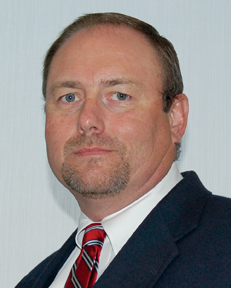BD+C: Why was D503 developed? What is its purpose?
Kenneth Cobleigh: Feedback from AIA market research indicated the need for guidance on the key issues associated with sustainable design and construction. The Guide was developed to assist users of AIA Contract Documents and other industry stakeholders in understanding and navigating through some of the issues and contractual considerations that are unique to sustainable design and construction, and understanding their roles and responsibilities and the risks they might face on sustainable projects.
Another purpose was to propose model language that would provide a framework for allowing such projects to move forward—to put in place a process by which the various parties interact to understand what the potential options are for the project, to flesh out those options, and ultimately to make decisions on what the sustainable objective might be and how best to achieve the objective through sustainable measures.
BD+C: Does D503 provide legal advice?
KC: D503 is not intended to provide legal advice, but rather to provide a broad, comprehensive discussion of key issues involved in sustainable design and construction, and model language for consideration when developing their agreements. The real value in D503 is sensitizing people to the key issues that exist under the umbrella term “sustainable design and construction.” The other value is the framework that we’ve laid out in D503 to allow projects to move forward in an orderly way—discussing the objective, setting the objective, determining the measures to meet the objective, allocating responsibility among the participants, rolling all that up into a plan to meet the owner’s needs, and providing enough detail to all the participants so that it sets realistic expectations.
BD+C: What are the key owner responsibilities in sustainable design and construction, as discussed in D503?
KC: If you have a project that has been designed to meet certain performance criteria, such as energy efficiency or water conservation, it is incumbent on the owner to understand the details of the underlying design and how the equipment and materials to support those systems need to be maintained. That’s an education process that needs to start early in the design, so that the owner can take the appropriate steps to have the right staff on board to maintain the systems and the proper processes in place to monitor the systems, and be able to educate tenants on their responsibilities. Owners also need to understand the parameters, limitations, and requirements of applicable certification programs.
BD+C: Can the D503 Guide be used in conjunction with design-build and IPD documents?
KC: Yes. The A201 family of documents is still the standard process that we see being used, so it made sense for us to start with that delivery model [design-bid-build]. However, the issues discussed in the Guide flow across all delivery models.
BD+C: What protections related to untested materials or equipment should firms be aware of?
KC: They should resist taking information at face value without asking about performance history and the research on systems, technology, or equipment. They have to be comfortable with the level of detail that’s being provided, so that they understand whether this is really proven technology or just something without the data. In some cases, even though it’s cutting-edge technology, the risks may be worth taking, and as long as that’s discussed with everyone, then that’s acceptable. But if people take marketing puffery as fact, that can lead to problems, particularly if they’ve hinged key elements of the project on the basis of that information.
BD+C: Does D503 discuss standard of care issues, or the potential for lawsuits, for sustainable design and construction?
KC: D503 discusses issues related to the architect’s standard of care, particularly in regard to the development of new codes related to sustainable design and construction. Any time you have particular performance criteria, such as achieving a certification or rating or some sort of descriptive building performance, the potential exists for lawsuits. Whether they would have merit is a different question. This is where education and paying attention to detail up front are important.
The more you talk in shorthand and use generalized descriptors, the greater the risk of lawsuits, because what “energy conservation” means to you and what it means to me may be two different things. Also, I may think you’re “guaranteeing” me LEED certification, but it may be out of your hands, so it’s important to make that clear in the scope of work.
BD+C: If you were representing a design or construction firm, what advice would you give to protect them from “green building liability”?
KC: I’d tell them to take the time to develop a clear scope of services that allocates responsibility appropriately across the project members. Then take the time to educate the owner and the other project participants about the various options to be considered and the pros and cons of the various choices that need to be made. The potential for claims or risks can be mitigated if people take the time to have detailed and meaningful conversations up front.
D503-2011 can be accessed free at: www.aia.org/sustainableprojectsguide.







